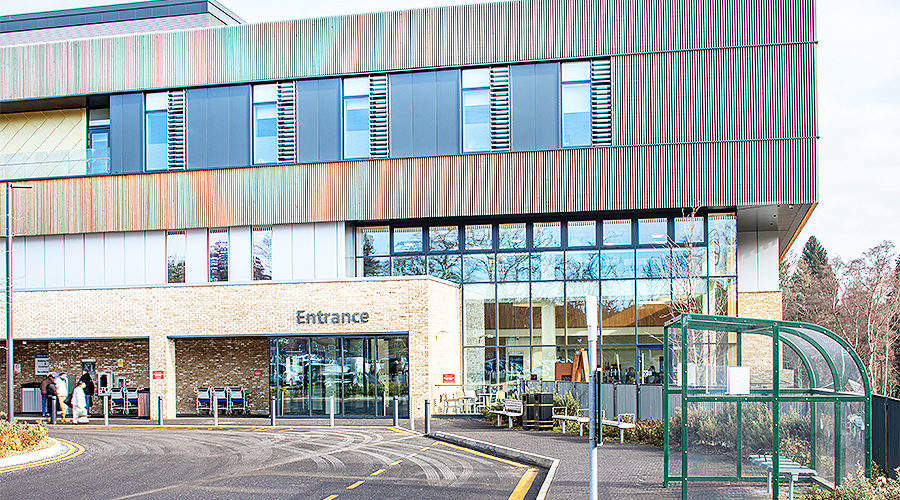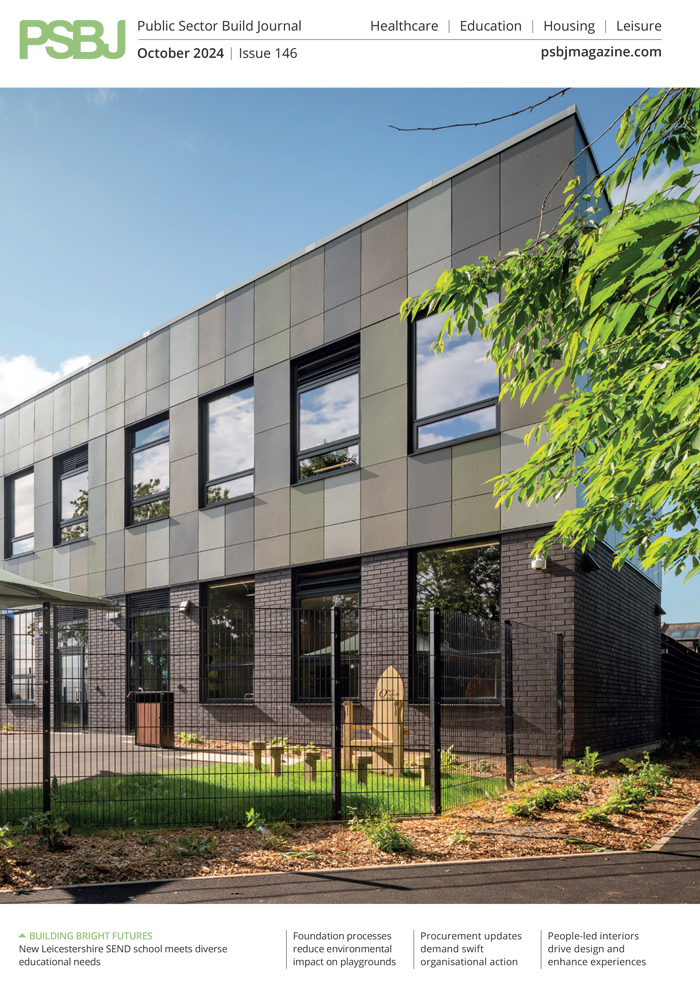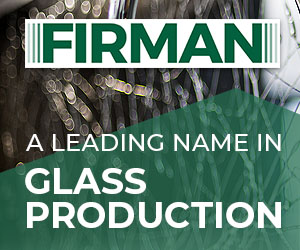Andrew Cooper, National Specification Manager from Senior Architectural Systems, one of the UK’s largest privately-owned aluminium fenestration solution providers, discusses how the latest innovations can give refurbished hospitals and other healthcare facilities a much-needed energy boost.
SAS
From improving natural light to reducing damp and boosting energy efficiency, fenestration has a huge role to play in creating healthcare buildings that are fit for purpose. Although architects can address these issues in new-build schemes, how can improvements be made to the NHS’ existing and deteriorating estates?
Sustainable building design is high on the agenda for most sectors but for the NHS, rising operational costs and the expense of refurbishing and repairing existing facilities has created a greater sense of urgency. This is the focus of the recently-published NHS Net Zero Building Standard, which looks specifically at how both costs and carbon can be reduced. As fenestration – and by that we mean windows, doors and curtain walling – plays such a huge role in preventing heat loss from the building envelope, the size, style and positioning of all glazed units need to be carefully considered. But how can the benefits of modern and efficient fenestration be retrofitted into existing, and often ageing, healthcare buildings? Early engagement with fenestration systems manufacturers is a good place to start.
Saving energy and costs
The development of thermally-efficient aluminium windows systems has come on leaps and bounds over the last decade, which means that many older healthcare buildings don’t come close to complying with the current Part L regulations. The reality of this is that these buildings are also more expensive to heat. With energy costs at an all-time high, replacing and upgrading windows to a system that is not only easy to maintain but which gives exceptionally low U-values by retaining more heat is a wise investment.
The added benefit of switching to an aluminium window system with a high-performance thermal barrier is that they are built to last and require little or no maintenance throughout their lifespan. This durability of aluminium windows can be further enhanced by powder coating, which also enables new windows to be colour matched to any existing fenestration systems that are to remain in place.
Natural choices
The link between natural daylight and wellbeing has been well documented and it’s important to provide those who are using a healthcare facility with uninterrupted views of the outside. The strength of aluminium allows larger expanses of glazing to be supported in much slimmer frames to maximise daylighting and as there are so many different shapes and sizes available, an aluminium window can open up even the smallest room. The use of aluminium curtain walling and fixed light windows can also create more welcoming entrance areas to further reduce the reliance on artificial light.
Creating a well-ventilated space is also important and replacement windows need to feature easy-to-use opening mechanisms or trickle vents. There are many styles to choose from but this function must be taken with a view on safety, and specifically how falls from height can be prevented. The use of window restrictors is a standard procedure but a window replacement strategy also opens up the possibility of the use of new innovations.
For example, a parallel push-style window can be a safe option for controlled ventilation and airflow. With hinges on all sides of the frame, the window can be easily pushed open and yet will remain parallel to the wall. This enables rooms to be safely ventilated, with the limited opening helping to reduce the risk of falls from the window.
Other considerations to keep in view
Reducing heat loss is often priority but thermally-efficient aluminium windows must also help reduce the risk of overheating. Close and early collaboration within the supply chain can identify the most cost-effective way to mitigate solar gain, whether this is through specialist glazing, the installation of manual or automatic opening louvres, or the detailed consideration of the size, position and opening style of each window.
Upgrading to more energy-efficient windows that don’t create any cold spots or draughts can also create more adaptable interior spaces by enabling radiators to be moved from their conventional positioning under the windows.
Door designs
As heat can also escape through doors, it’s important to choose a system that can achieve low U-values so that the amount of energy lost is minimised. Automatic opening doors are commonplace in hospital environments and sliding doors are ideal as they save space and reduce the number of touch points. However, it’s important to check that doors all work effectively as those that stay open for too long, or do not fully close, will contribute to further energy loss. Swing doors are also a popular choice as they provide quick access but in a busy hospital environment, a strong, heavy and robust door is essential.
Glazed doors can aid navigation and boost daylighting and although they may not be suitable for all areas of a hospital where a greater level of privacy is required, they can make a huge difference to the main entrance and communal public areas. Aluminium-framed commercial doors are also suitable for interior spaces as they are non corrosive, meaning they can withstand the rigorous cleaning procedures required of a hospital environment without any detriment to the quality of its finish. Glazed aluminium internal doors also allow natural light to flow and any obstacles or other building users to be easily seen so that accidents from collisions can be avoided.
Best practice
With so much to consider and the challenge of working on existing healthcare facilities that are still operational, specifiers responsible for updating NHS estates face a huge and complex task. Tapping into the expertise of the supply chain can highlight areas where additional savings can be made, both in terms of operational costs and carbon emissions. At Senior, we have launched a new consultancy service to advise how the retrofitting of new aluminium fenestration systems can help create healthier and more sustainable buildings across the healthcare sector.










